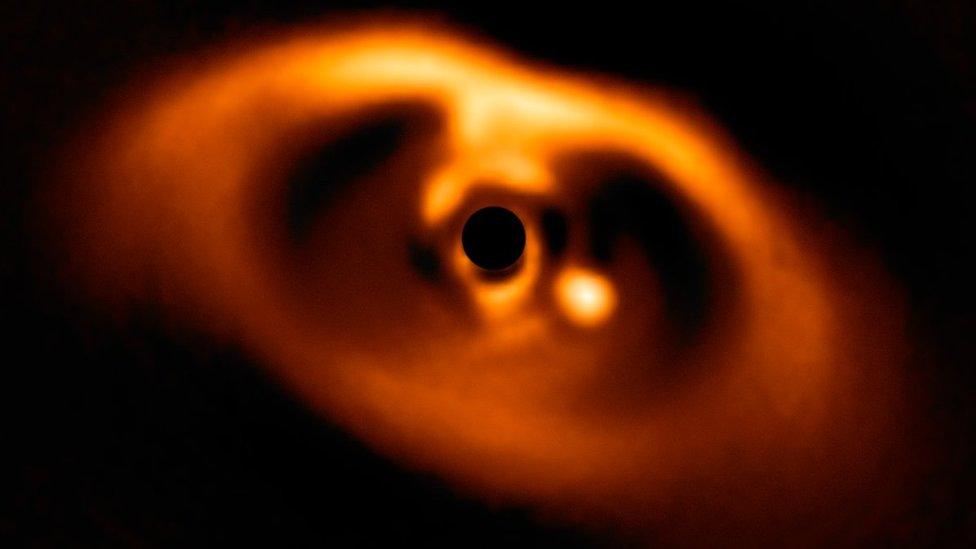Newborn planet pictured for first time
- Published

The planet is visible to the right of its star, which has been obscured
Astronomers have captured this image of a planet that's still forming in the disk of gas and dust around its star.
Researchers have long been on the hunt for a baby planet, and this is the first confirmed discovery of its kind.
Young dwarf star PDS 70 is less than 10 million years old, and its planetary companion is thought to be between five and six million years old.
Known as PDS 70b, it appears to be several times the size of Jupiter and probably has a cloudy atmosphere.
The planet was pictured using the Very Large Telescope (VLT) in Chile
Researchers led by a team at Germany's Max Planck Institute for Astronomy found that the planet orbits about as far from its star as Uranus does from the Sun.
Each journey around the dwarf star takes about 118 years.
Surface temperatures are thought to exceed 1,000C; far greater than those on any planet in our Solar System.
The star's light was blocked with a tool called a coronagraph, which allowed astronomers to see the much fainter planet.
Artist's impression: Planets are formed through a series of collisions
How are planets born?
The most widely accepted theory is that planets are created from the material left over when a star forms.
Mostly consisting of gas and dust, this orbits around the new star in a wide disk.
Over time, bits of that debris collide and stick together.
The bigger they get, the more gravity they have, and the more additional debris they attract - including other planets in the process of forming.
Once an object has cleared a path around itself in the disk, it is a planet.
Researchers only have our own Solar System on which to build this theory, so being able to visualise planets like PDS 70b in the early stages will help astronomers to understand more about this process.